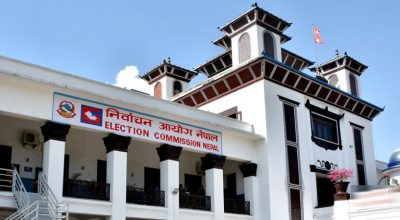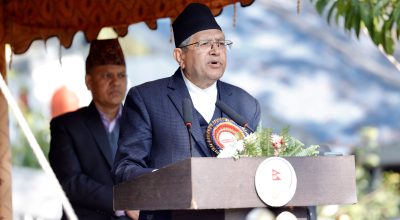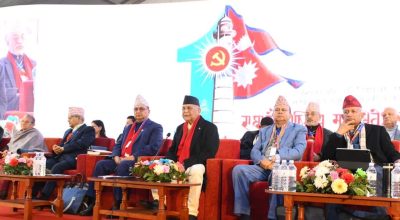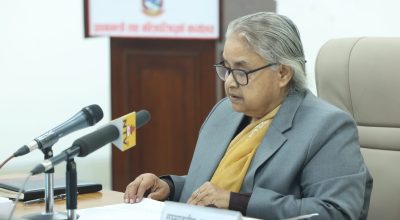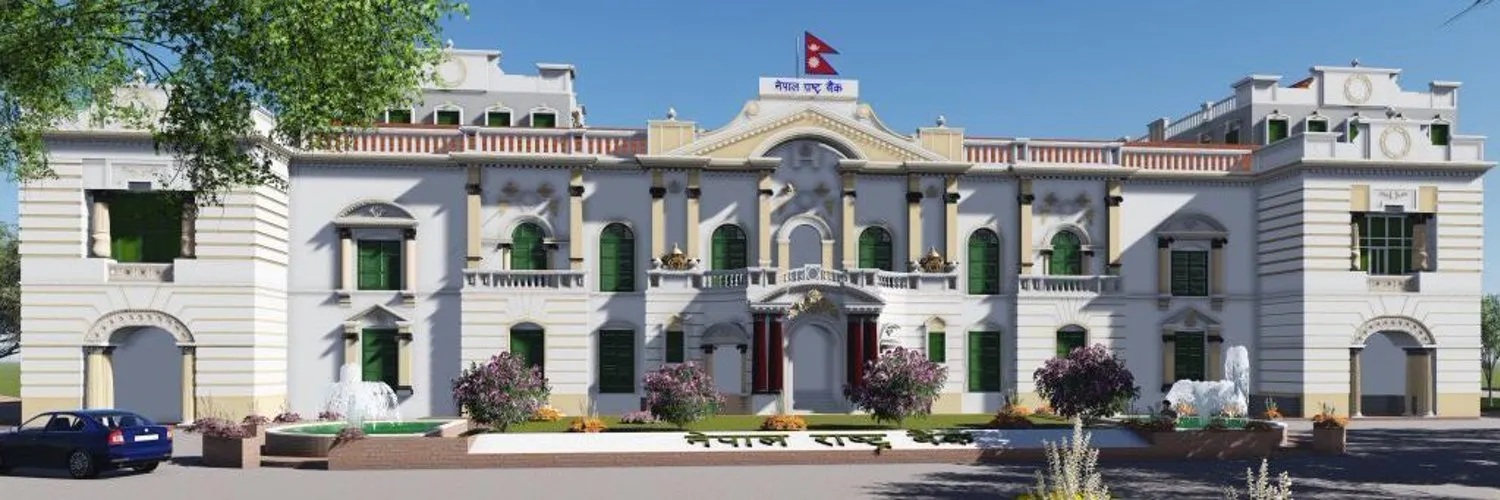
Kathmandu, March 11: Country’s economy which remained sluggish in the past couple of quarters due to COVID-19 impacts, the Russia-Ukraine conflict, political instability and some other factors is now gradually on track.
As per the recent data shared by Nepal Rastra Bank (NRB), the central bank, the external sector of the country’s economy is in comfort zone. However, indicators of the public finance are not upto the mark. Poor revenue collection, limited capital expenditure, burgeoning recurrent expenditure and increasing public debt are the key challenges that the country’s economy is facing now.
The growth rate is below than the expectations due to low investment in the areas of capital formation and internal production.
Likewise, unemployment rate and exodus of youth is unabated.
Despite sufficient liquidity in the banking sector and low interest rate, the demand for loan has not gone up while the market is slow owing to inflation and limited demand from the consumers.
Similarly, the real estate and stock market have fared well. Against this backdrop, RSS has done a comparative analysis of economic indicators of the country of the past one year.
Gross foreign exchange reserves increased 19.9 percent to Rs 1844.94 billion in mid-February 2024 from Rs 1539.36 billion in mid-July 2023. In the US dollar terms, the gross foreign exchange reserves increased 18.6 percent to 13.89 billion in mid-February 2024 from 11.71 billion in mid-July 2023.
Considering the imports of the first seven months of the current fiscal year, the foreign exchange reserves is sufficient for the import of goods of 14.7 months, and goods and services of 12.3 months while the foreign exchange reserves was sufficient to cover the import of goods of 10.8 months and goods and services of 9.4 months in the same period in the last fiscal year.
The ratio of reserves-to-GDP is 34.3 percent while such ratio was 25.1 percent in the same period of 2023.
The current account is at a surplus of Rs 161.69 billion in the first seven months of the current fiscal year against a deficit of Rs 40.16 billion in the same period of the previous year.
In the review period, the capital transfer decreased 29 percent to Rs 3.80 billion and net foreign direct investment (FDI) remained a positive of Rs 5.18 billion. In the same period of the previous year, capital transfer amounted to Rs 5.35 billion and net FDI amounted to Rs 1.04 billion, according to the central bank.
In the first seven months of the last fiscal year (2022-23), the country’s remittance inflow was amounted to Rs 689.88 billion and the figure in the corresponding period in the current fiscal year (2023-24) rose to Rs 839 billion. The rise is 21.6 percent.
Foreign trade
In the initial seven months of the current fiscal year, Nepal experienced a 7.1-percent fall in total merchandise exports and it was amounted to Rs 86.83 billion.
Till the month of Magh (January-February) of the last fiscal year, Nepal exported goods worth Rs 93.43 billion. This year, unlike the previous fiscal year, not only exports but imports have also decreased. In the first seven months of the last fiscal year, Nepal imports trade was amounted to Rs 919 billion and it dropped to Rs 897.94 billion in the corresponding period of the current fiscal year.
Government expenditures
The total expenditure of the government stood at Rs.686.75 billion during the seven months of 2023/24 and compared to the growth of 13.0 percent in the last fiscal year, government expenditure increased by 2.9 percent in this period. The recurrent expenditure, capital expenditure and financial expenditure amounted to Rs.509.04 billion, Rs.63.58 billion and Rs.114.13 billion respectively in the given time.
The total’s government’s expenditure was Rs 667.66 billion in the corresponding period last fiscal year with current expenditure of Rs 531.50 billion, capital expenditure of Rs 66.30 billion and financial expenditure of Rs 69.86 billion.
The data shows that this year, the current and capital expenditures decreased compared to the previous year while the financial expenditures increased.
The budget allocated towards the financial management is being spent for repaying the public debt, including the interest.
Compared to the last fiscal year, there is no notable progress in revenue collection this year. In the seven months of the last fiscal year, the government’s revenue collection (towards taxation) was amounted to Rs 464.19 billion and it was Rs 50.5 billion towards the non-taxation and it total, the revenue mobilisation was worth Rs 514.69 billion.
In the corresponding period of the current fiscal, the total revenue mobilization of the government (including the amount to be transferred to provincial and local governments) stood at Rs.567.40 billion. The tax revenue amounted Rs.510.50 billion and non tax revenue Rs.56.91 billion in the period.
Similarly, cash balance at various accounts of the GoN maintained with NRB remained Rs.215.26 billion (including Provincial Governments and Local Government Account) in mid-February 2024. Such balance was Rs.65.36 billion in mid-July 2023.
Inflation
The rate of inflation has decreased to some extent this year as compared to the previous year. The year-on-year inflation based on the consumer price index until February 12, 2023 was 7.88 percent, and it is at 5.01 percent until February 12, 2024.
Service sector
Net services income remained at a deficit of Rs.37.26 billion in the review period compared to a deficit of Rs.44.36 billion in the same period of the previous year.
Under the service account, travel income increased 44.5 percent to Rs.45.40 billion in the review period which was Rs.31.41 billion in the same period of the previous year. Under the service account, travel payments increased 49.9 percent to Rs.104.75 billion, including Rs.66.64 billion for education. Such payments were Rs.69.89 billion and Rs.43.74 billion respectively in the same period of the previous year.
Foreign exchange rate
Nepalese currency vis-à-vis the US dollar depreciated 1.05 percent in mid-February 2024 from mid-July 2023. It had depreciated 3.18 percent in the same period of the previous year. The buying exchange rate per US dollar stood at Rs.132.56 in mid-February 2024 compared to Rs.131.17 in mid-July 2023.
Deposit Mobilization
Deposits at Banks and Financial Institutions (BFIs) increased Rs.397.20 billion (7.0 percent) in the review period compared to an increase of Rs. 253.97 billion (5.0 percent) in the corresponding period of the previous year.
On y-o-y basis, deposits at BFIs expanded 14.4 percent in mid-February 2024. The share of demand, saving and fixed deposits in total deposits stood at 6.2 percent, 27.4 percent and 59.8 percent respectively in mid-February 2024. Such shares were 7.8 percent, 25.8 percent and 60.1 percent respectively a year ago.
The share of institutional deposits in total deposit of BFIs stood at 36.4 percent in mid-February 2024. Such a share was 36.6 percent in mid-February 2023.
Credit Disbursements
Private sector credit from BFIs increased Rs.197.21 billion (4.1 percent) in the review period compared to an increment of Rs.148.12 billion (3.2 percent) in the corresponding period of previous year. On y-o-y basis, credit to the private sector from BFIs increased 4.7 percent in mid-February 2024.
The shares of private sector credit from BFIs to non-financial corporation and household stand at 63.2 percent and 36.8 percent respectively in mid-February 2024. Such shares were 64.5 percent and 35.5 percent a year ago.
In the review period, private sector credit from commercial banks, development banks and finance companies increased 4.2 percent, 3.4 percent and 3.0 percent respectively.
In the review period, out of the total outstanding credit of the BFIs, 11.6 percent is against the collateral of current assets (such as agricultural and non-agricultural products) and 67.6 percent against land and building. Such ratios were 12.2 percent and 67.3 percent respectively a year ago.
In the review period, outstanding loan of BFIs to the agriculture sector loan increased 0.8 percent, production sector 8.8 percent, construction sector 4.9 percent, transportation, communication and public sector 7.4 percent, wholesale and retail sector 3.0 percent, service industry sector 5.6 percent and consumable sector 6.9 percent.
In the review period, term loan extended by BFIs increased 14.0 percent, cash credit loan 26.0 percent, trust receipt (import) loan 11.1 percent, real estate loan (including residential personal home loan) 5.2 percent, and margin nature loan 11.6 percent whereas overdraft loan decreased 42.3 percent (mainly due to reclassification of loan from the last year) and hire purchase loan decreased 20.3 percent.
Interest Rates
The weighted average 91-days treasury bills rate remained at 3.34 percent in the seventh month of 2023/24, which was 9.79 percent in the corresponding month a year ago. The weighted average inter-bank transaction rate among BFIs, which was 5.29 percent a year ago, decreased to 3.04 percent in the review month.
The average base rates of commercial banks, development banks and finance companies stood 9.06 percent, 11.13 percent and 12.70 percent respectively in the seventh month of 2023/24. The average base rate of commercial banks was 10.72 percent in the corresponding month a year ago.
Weighted average deposit rates of commercial banks, development banks and finance companies stood 7.01 percent, 8.26 percent and 9.45 percent respectively in the review month. Weighted average deposit rate of commercial banks was 8.41 percent a year ago.
Likewise, the weighted average lending rate of commercial banks, development banks and finance companies stood 11.08 percent, 12.85 percent and 13.93 percent respectively in the review month. Such a rate of commercial banks was 13.03 percent in the corresponding month a year ago. RSS #nepal





